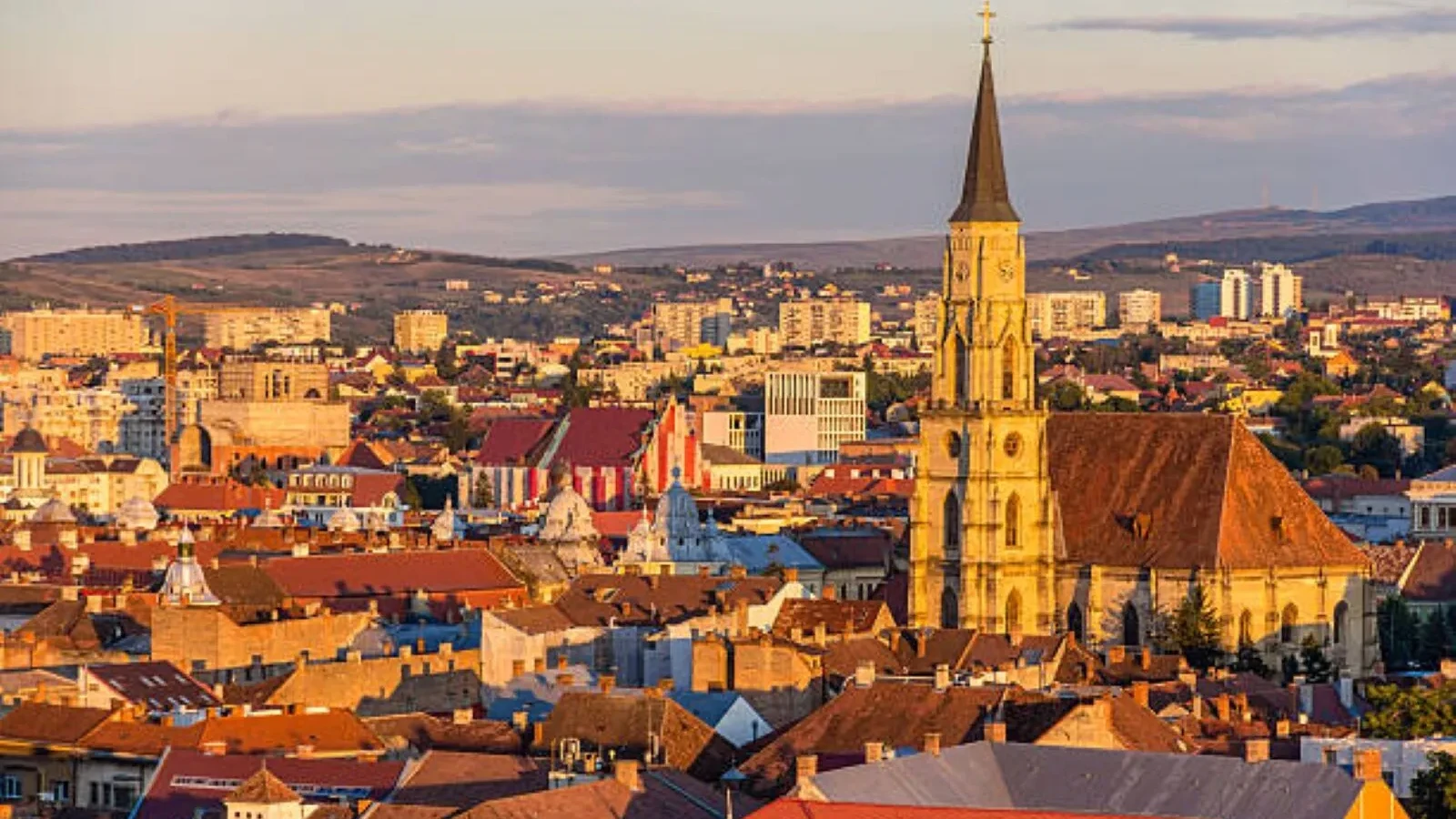Cluj-Napoca is the best-performing city in Romania, followed by Bucharest and Sibiu, while medium-sized cities (with 60,000 to 200,000 inhabitants) are showing the most visible progress, particularly in the areas of Education and Culture & Sport, according to the second edition of the City Index, published on Thursday.
The study, launched by the Institute for Visionary Cities (IOV), highlights that the top ten positions have remained almost unchanged compared with 2024, confirming stability at the top. Thus, Cluj-Napoca, Bucharest and Sibiu continue to lead the urban performance ranking in Romania, followed by Brasov, Timisoara, Oradea (in the same order as last year), and Iasi, Alba Iulia, Constanta and Targu Mures, with only minor year-on-year changes.
According to the authors of the index, competition is particularly strong in the middle of the ranking, where cities such as Craiova, Bistrita, Suceava and Targoviste are shifting positions quickly depending on their performance in education, tourism and cultural indicators.
Romania's capital ranks first in the largest number of indicators (14) in the 2025 edition of the Index, but the surprise comes from the next two cities with the most first places nationally, each leading in six of the 51 indicators analysed. Cluj-Napoca ranks first for the following indicators: Pupils & Students, Quality of Secondary & High School Education, Education Level, Ranking of the Best Local University, Entrepreneurial Density, and Air Connectivity.
The other city with very good results is Resita, which last year topped five indicators and has now risen to six in 2025 - Air Quality Index, Green Footprint, Public Investment Effort, Urban Traffic, Housing Affordability and Weather.
The analysis shows that over 80% of municipalities (34 out of 41) occupy at least one top-three national position for one of the indicators measured.
"Quality of Place" is one of the three main components of the City Index and reflects the attractiveness of the city, the way its infrastructure, attractions, natural environment and essential services (healthcare, education) contribute to a high standard of living. Again this year, Cluj-Napoca leads this component, followed by Sibiu, Bucharest, Brasov and Iasi. Alba Iulia, Targu Jiu and Ramnicu Valcea are three medium-sized cities that perform very well and rank in the Top 10 for Quality of Place. Resita remains the city with the cleanest air and the largest green footprint, Sibiu stands out for its historical and touristic heritage, Ramnicu Valcea has the highest life expectancy, and Targu Mures ranks first for Hospitals & Doctors among all 41 municipalities analysed, the report notes.
By contrast, in the "Prosperity" component, which reflects the economic strength of the city and its interaction with social dynamics, Bucharest ranks first, followed by Cluj-Napoca and Timisoara. The capital leads in Business Turnover and Innovation Index but continues to have the weakest score for Crime Rate. Cluj-Napoca ranks first in Entrepreneurial Density and Urban Competitiveness, but, as last year, ranks lowest for Housing Affordability.
Craiova has entered the Top 15 Prosperity this year, with high scores for the Innovation Index (5th place) and Urban Competitiveness (5th place).
The report also notes progress among medium and small cities in the Top 10 - Alba Iulia (6th overall for Prosperity, 2nd for Internal Migration and 6th for Public Investment Effort), and Bistrita (8th for Prosperity, with strong points being 2nd for Population Dynamics and 3rd for EU Funds Absorbed). Notably, the EU Funds Absorbed indicator shows a marked change this year, with Focsani ranking first (compared to Resita in the previous edition), followed by Zalau and Bistrita. 'In this component, we can clearly see the correlation between positive population dynamics and prosperity," the report's authors note.
In 2025, for the "Vibrancy" component, Cluj-Napoca moves into the leading position (occupied last year by Sibiu), followed by Bucharest, with Sibiu now in third place.
The data indicate that medium-sized cities (60,000-200,000 inhabitants) have increasingly carved out a clear niche for themselves in education, culture and sport.
The City Index methodology is based on the analysis and consolidation of data collected between November 2024 and July 2025 for Romania's 41 county-seat municipalities. The 51 selected indicators cover various aspects of urban life and are grouped into three main components: Quality, Prosperity and Vibrancy.
































Comentează